@
AMNESIA
Do you believe in "IDENTITY?"
"IDENTITY is a naive conception."
I was inspired by Marvin Minsky's radical comment during his interview with a Japanese philosopher.
"Even the same person, there is a big difference what he/she is thinking about. My biologist friend told me our cell in our body turn over or change in certain period of time. In that sense, we are unable to identify ourselves to be a same person.
But they said that the cells only in our brain doesn't change that obviously..."
I/We've been in-printed our role model or idealistic behaviour to be FINE traditional girl(s)/woma(e)n during our childhood with various of gifts and ceremony in our society.
And all those gifts are usualy given by our parents and relatives but quite often not by my/our own choice.
But after we grew up to be an ADULT(S,) we forget about such reality which we had in our childhood.
When was your turning point to say Good-bye to your girlhood or childhood?
What reminds you the most of your childhood? Do you still hold that "girly" sensitivity with you?
Let's try to get back your own childhood for a while with imaginary time travel for the MEETING WITH YOUR INNER GIRLS...
Your brain could be a vehicle for this time travel.

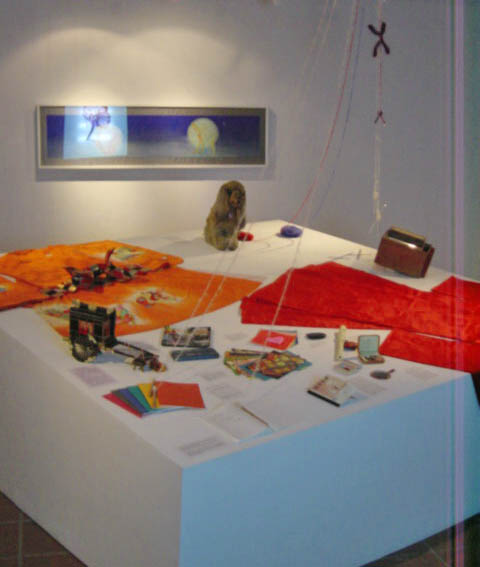
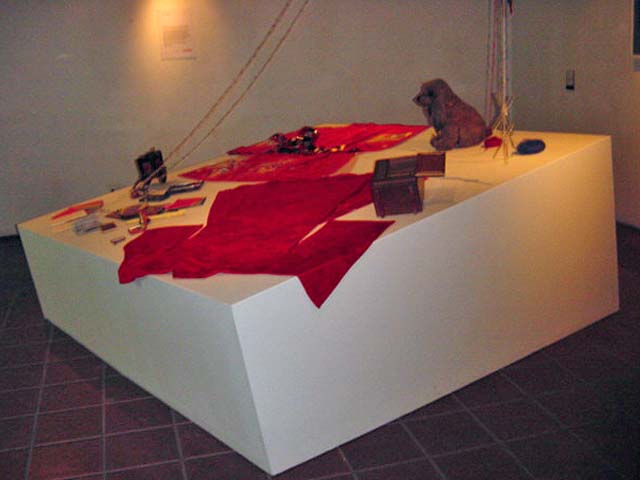
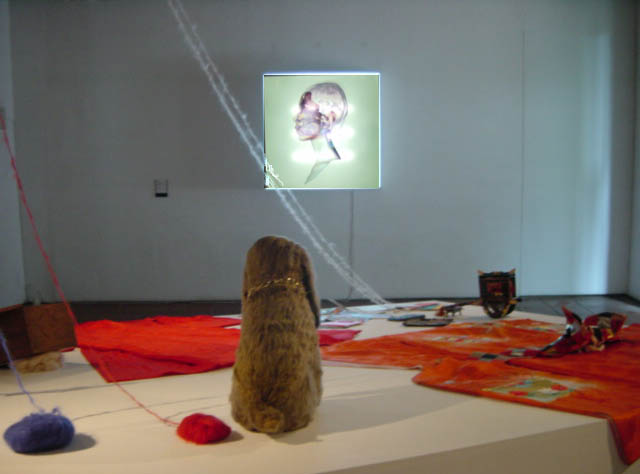

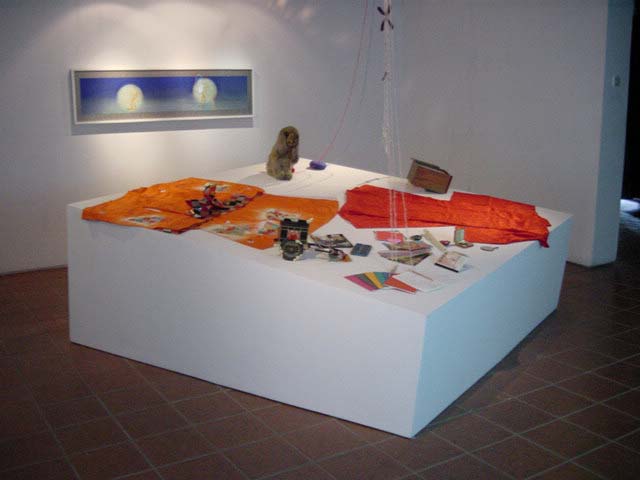
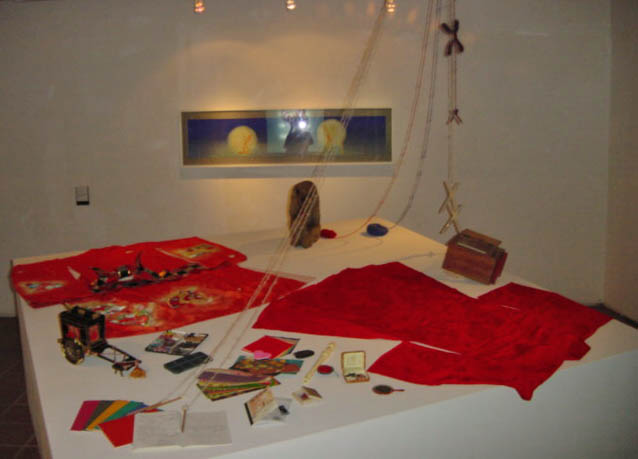
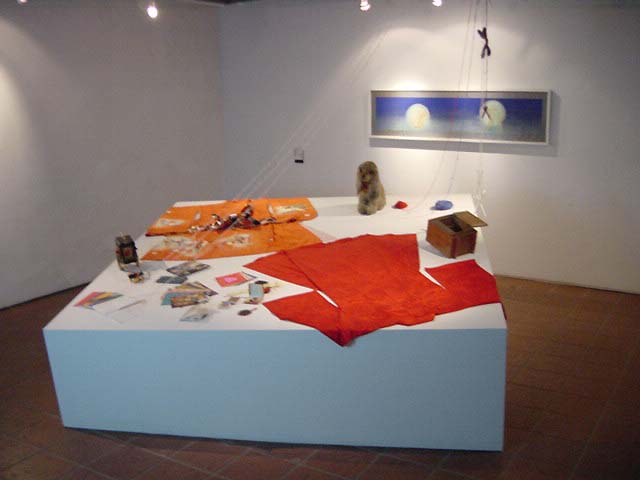
I brought following items from my house and exhibited.
All the items are I actually wore, used, played and lived with during my girlhood...
BOSHI-TECHO: Mother and Child note book of my mother (and me.)
HESONOO: Nebula code of my mother and me.
WANCHAN, a staffed dog. my buddy, my best friend during my childhood who knows every good and bad memory of me. He had a philosopher's face and we could share the pain.
I washed him for this exhibition that's why his nose is a bit shrunk...sorry, WANCHAN.
ORIGAMI, CHIYOGAMI, Pallet, Recorder, Castanet, a little purse, made of a doll house for my little BUNCHO bird.
A little hand mirror, necklace and pendant, a mimicry of traditional wedding carriage cart GOSHO-GURUMA.
KIMONO, traditional Japanese clothes for SHICHIEGOESAN, a Japanese traditional ceremony for children.
(Girls wear this at the age of 3(SAN) and 7(SHICHI.) Boys wear another style at the age of five (GO.)
Small notebooks in five colours (in ancient Asia, these five colours meant four directions and center or everywhere) and pencils tied with yarn and chromosome shaped glasses are for "analogue interaction" with audiences. I asked for the audiences to write down the most strong episode or memory in their childhood or when they said Good-by for their own childhood.
The white stage is made by Takada-san and kind helpers in Indonesia.
The height of each four corner is different. So that this stage gives impression for audiences unstable and deformed imaginary time and space.
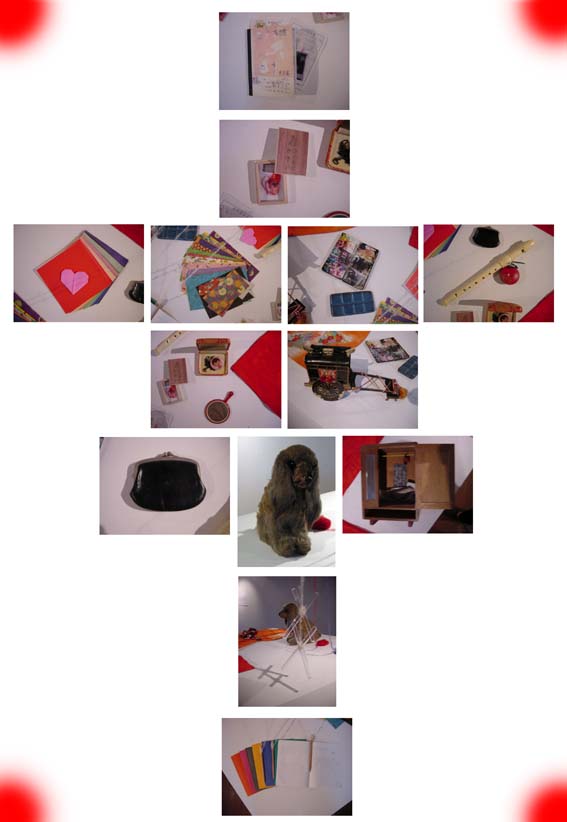
Exhibiton at Selasar Sunaryo Art Space, Bandung, INDONESIA in 2004.
Organized by ARDA/Emiko NAMIKAWA and
Selasar Sunaryo Art Space.
This exhibition is related to the exhibition "Inside of myself/Outside of yourself"
at SUGINAMI-KAIKAN in 2003.